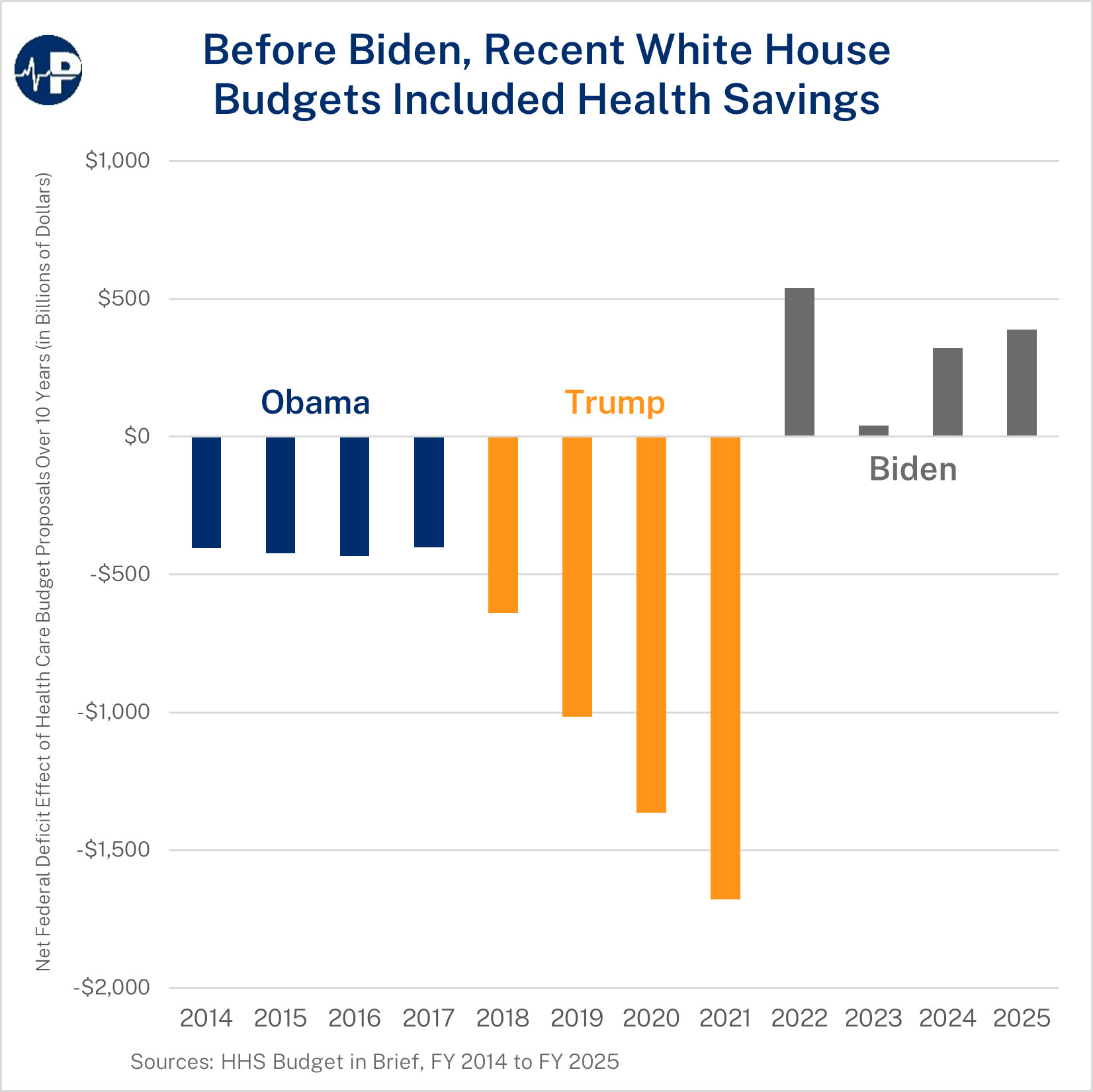On Monday, the Biden Administration released the president’s fiscal year 2025 budget, 35 days after the statutory (but often ignored) deadline. Federal budgets in the fourth year of an administration are often a laundry list of policy statements, fig leaves to interest groups, and aspirations with little chance of being approved by a divided Congress.
But President Biden is fond of saying, “Don’t tell me what you value, show me your budget, and I’ll tell you what you value.” Based on this budget, it’s clear he desires a much bigger government as the federal government’s share of the economy would grow to unprecedented peacetime levels. With respect to health policy, his budget shows he values the following:
- Unsustainable spending growth and passing the buck – The federal government already spends more on health care than any other area, outpacing the entire discretionary budget. Yet this is Biden’s fourth straight budget that proposes a net increase in federal spending on health beyond the already unsustainable growth under current law (see the Paragon Pic below with additional analysis here). As EPIC President Paul Winfree has noted, the primary fiscal problem is the growth of federal health spending and without nearly $2 trillion in savings (relative to baseline projections) over the next decade, we will face a future of much greater debt, interest rates, inflation, and tax burdens. If the health provisions in this budget were adopted, the problem would worsen.

- More subsidies for insurance companies – The budget proposes $473 billion in higher spending to maintain the enhanced Affordable Care Act (ACA) subsidies to health insurers and to create a Medicaid-like program in states that have not adopted Medicaid expansion. The subsidies have been much more expensive per newly insured than anticipated – with most subsidies going to people who already have coverage or people who, as a result of Biden’s policies, now pay nothing for coverage. The expanded subsidies provide insurers with significant pricing power, since they can raise premiums with the taxpayer picking up nearly the entire burden for the premium increase. The ACA’s Medicaid expansion, which Biden proposes to expand, has also proved to be a huge windfall for health insurers, in part because they receive payments on behalf of millions of people who are not eligible for the program.
- Protecting large insulin manufacturers from competition – As we noted last week, over 75% of insulin users already have copays under $35 but large insulin manufacturers support a statutory cap to mitigate price competition from cheaper alternatives. The budget doubles down on expanding copay caps even as it acknowledges it would increase federal spending and would, ironically, increase actual insulin prices.
- Repeating the mistakes of the past – The most significant attempt at cost savings is an expansion of Medicare price controls on prescription drugs. Medicare reimbursement for drugs, particularly in Part B, can certainly be improved. But Medicare price controls have been used for hospitals since 1983, and they have both failed to control spending increases and have created huge distortions in the delivery of care and the flow of investment.
- Wool over the eyes – The White House claims that its plan would “indefinitely” extend the solvency of the Medicare trust fund, but it does this by relying on budget gimmicks. First, the looming insolvency involves the Part A trust fund which pays for hospital services, yet the budget only proposes savings on prescription drugs (which are funded by general revenues and represent a much smaller portion of spending) and avoids reforms to the root cause of Medicare’s unsustainable trajectory (the growth of payments to hospitals). Second, of the roughly $800 billion in higher Medicare-specific taxes that President Biden proposes putting into the Part A trust fund, most would come from taxes on net investment income that fund other government programs.
President Biden’s budget contains a few sensible proposals that align with Paragon’s mission of reforming government and empowering patients by improving incentives to get value from our health care expenditures. Policymakers should give a closer look to proposals to improve biosimilar competition, expand accountability for organ procurement organizations, and more closely scrutinize Medicaid managed care. However, this budget misses many other opportunities to advance meaningful solutions, including reforms such as site neutral payments that were in budgets from Presidents Obama and Trump. Ultimately, when it comes to the biggest health care challenges facing the country, this budget would move policy in the wrong direction.
All the best,
Brian Blase
President
Paragon Health Institute



